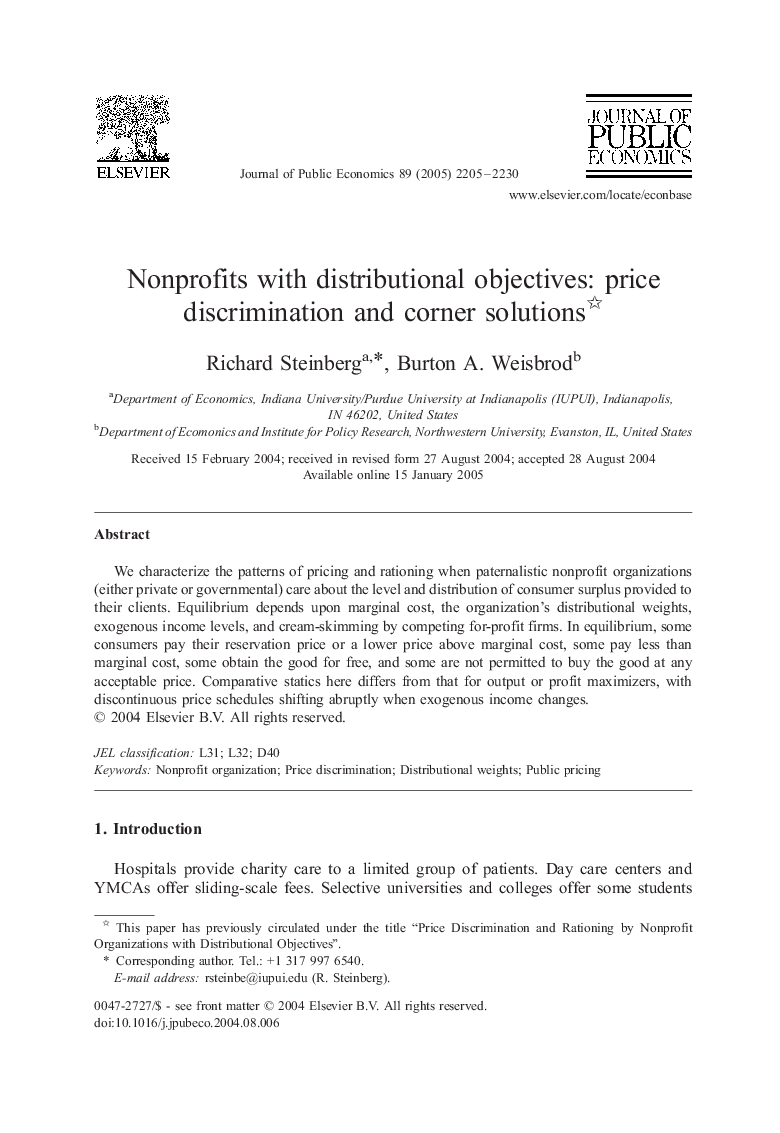| Article ID | Journal | Published Year | Pages | File Type |
|---|---|---|---|---|
| 969158 | Journal of Public Economics | 2005 | 26 Pages |
We characterize the patterns of pricing and rationing when paternalistic nonprofit organizations (either private or governmental) care about the level and distribution of consumer surplus provided to their clients. Equilibrium depends upon marginal cost, the organization's distributional weights, exogenous income levels, and cream-skimming by competing for-profit firms. In equilibrium, some consumers pay their reservation price or a lower price above marginal cost, some pay less than marginal cost, some obtain the good for free, and some are not permitted to buy the good at any acceptable price. Comparative statics here differs from that for output or profit maximizers, with discontinuous price schedules shifting abruptly when exogenous income changes.
